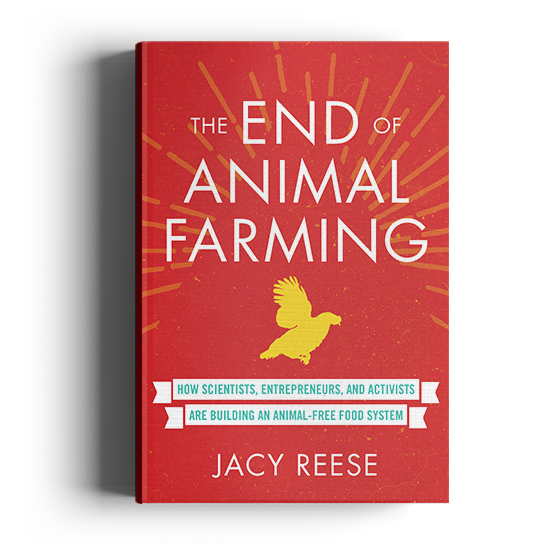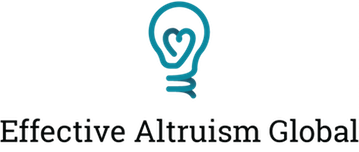Price: ****
Ease of use: ****
Value for EAA beginners: ****
Value for EAA pros: ***
As ever, this post reflects my own views, not those of my employer.
On the 1st and 2nd of September, I attended a two-day training session by the Center for Effective Vegan Advocacy, hosted by ProVeg UK. The training was led by Melanie Joy and Tobias Leenaert. You can see the agenda here. Many relevant resources – either similar to the talks themselves, or recommended as relevant to the content – can be found here.
The talks
Tobias kicked off the sessions with an excellent, concise summary of some of the key principles of Effective Altruism, and how these might apply to animal advocacy in broad terms. His talks on the second day were mostly either summarising some of the key ideas in his book, How to Create a Vegan World, or adding some supplementary ideas, which he shares at various points on his blog (and which mostly repeated the talk he had given in London last year, on the same title as his book). These talks were all excellent for those unfamiliar with EA and EAA (if this applies to you, then see this list of introductory materials), his book and blog, although for those who were already aware of these ideas, they had little to add.
Melanie Joy spoke about effective communication. This is a topic that I find people who are new to veganism or to EAA are often keen to talk about or find additional resources on (hence why I wrote this post). A lot of the talk focused on theories of ways to break down, understand and reflect upon communication in general. This was then supplemented with some more practical tips. For example, one idea which many attendees seemed keen to focus on putting into practice was the idea of whole messages. In discussions going forward (whether about veganism or not!) I plan to try and focus on consistently implementing a simplified version of this, where I lead with neutral, objective observations before explaining my interpretation or feelings arising from that observation, and before moving onto any relevant requests or suggestions for my audience. Indeed, some of these ideas are likely as useful for personal communication as they are for communication about veganism. Melanie’s talks did not drill down much into the evidence-base of her claims and suggestions. This made the talks more accessible for practical advice on communication, but made them less persuasive if any of her views about the foundational questions in EAA differed from your own; speaking to a few individuals in the breaks, they were unhappy with some of the suggestions to focus on tactics which fell short of an explicit, comprehensive “vegan” ask, and there was little evidence in the talks which might have changed their minds.
Melanie also gave a talk about sustainable activism. I did not take any notable lessons away from this talk; it felt as if the purpose was simply to reinforce the importance of not burning out as an activist. Melanie did recommend some resources for further use, however, such as the book Trauma Stewardship, and these could be useful for many individuals.
Other benefits
An additional benefit of the training is in building connections, community and communication between the attendees themselves. For those new to animal advocacy or interested in becoming active as advocates for the first time, the training offers the chance to meet other advocates, and perhaps to find out about opportunities for engagement. For those more heavily involved in animal advocacy, the event could provide great opportunities to meet others and to build up relationships which support more coordinated action. This might especially be the case if the training has not been run in your area before or if your country does not have a very established or well-connected animal advocacy community. CEVA could possibly have made more of these potential benefits: perhaps by formally hosting a meetup or discussion group around the main events, for those working in animal advocacy (although Tobias suggested to me that they do do this sort of thing for countries with a less well-established animal advocacy community); perhaps simply by providing a list of attendees before the event itself, so that attendees could see if there were particular individuals or organisations that they wanted to connect with at the event (this would have been very useful for me).
Summary of benefits for different types of attendees
Those new to animal advocacy will probably benefit most from the talks, especially Tobias Leenaert’s introductory content. The only potential negative of the training for newcomers, apart from the reasonable fee and the time commitment, is that by focusing on “communication”, it focused inevitably on individual discussions about veganism, which may reinforce the assumption (which I would argue is mistaken) that individual vegan outreach is an effective use of marginal resources (see here for a summary of that debate).
For those working in animal advocacy organisations but unfamiliar with the concepts of Effective Altruism and pragmatic approaches to animal advocacy, Tobias’ talks would be very useful. For those who work directly in communications about veganism (whether that be in designing materials, in marketing, or in corporate outreach), then Melanie’s talks may have been very useful. For those well acquainted with EA ideas and not involved in work requiring “effective communication”, then the talks of the training don’t offer much of direct value.
The training weekend probably offers decent value in terms of community-building and networking for all attendees, although to varying extents, depending on your personal and professional situation. For the reasonable price to attend, this probably makes attending worth it for many people.
Personally, as someone who works full time in EAA research, I found it a vaguely productive use of a weekend where I otherwise wouldn’t have done much work relating to EA. I also thoroughly enjoyed the events and socialising in the evening. That said, I wouldn’t have attended if I had had to sacrifice working days to attend.



